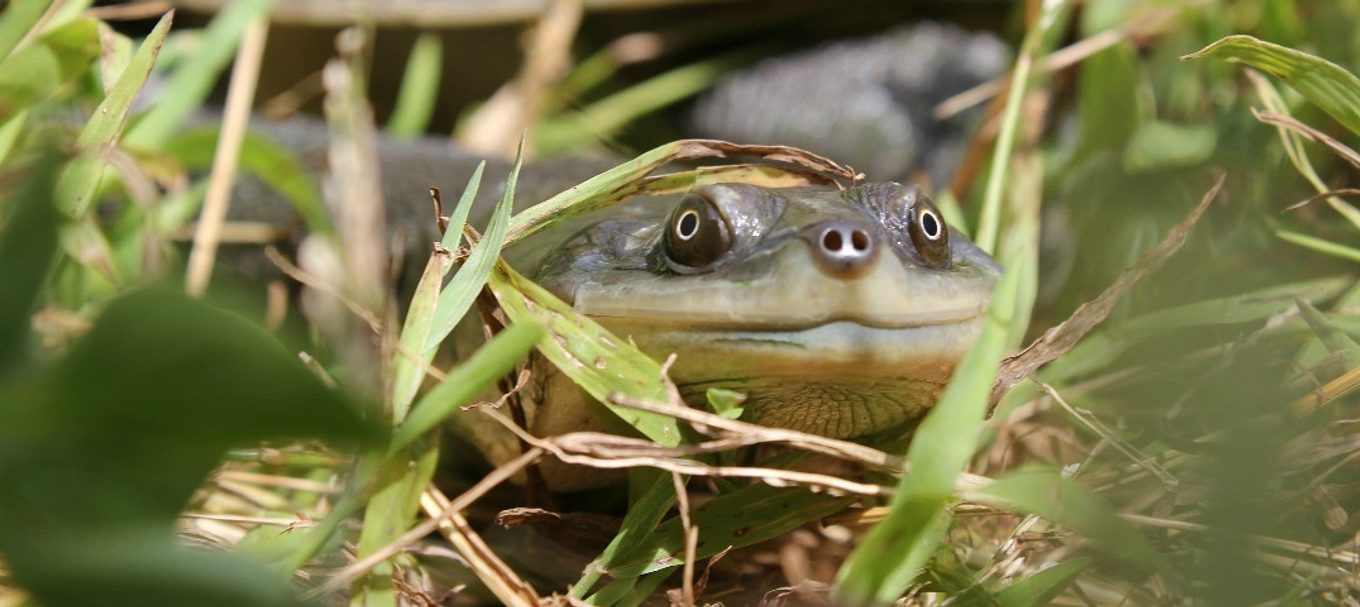
Your guide to freshwater turtles in South Australia
This World Turtle Day, find out which freshwater turtles can be found in SA, and why they are in fact environmental heroes in a half-shell.
World Turtle Day is celebrated every year on 23 May to help raise awareness about turtle populations to help conserve this ancient animal and protect their habitats.
Turtles are one of the most threatened species on earth. Of the 356 species of turtles and tortoises globally, more than 50 per cent are threatened with extinction.
What freshwater turtles are found in South Australia?
There are more than 20 different species of freshwater turtles found all over Australia, but in South Australia, you can find 3 species of freshwater turtles:
- Murray short-necked turtle (Thukabi – Ngarrindjeri name)
- Eastern long-necked turtle (Malinthaipari – Ngarrindjeri name)
- Broad-shelled turtle – the largest of our turtle species boasting the longest turtleneck in the world!



Why are turtles important?
Turtles play an important role in keeping freshwater ecosystems healthy, as they help to clean and move nutrients around the water - like little vacuum cleaners. They also help to disperse seeds for native vegetation. In the Lower Lakes region, Murray short-necked turtles, or Thukabi, are very important to Ngarrindjeri people. The species was severely impacted by the Millennium drought, but thankfully, numbers are starting to return.
Conserving turtles
While River Murray turtles are not listed as endangered, they are in an increasingly vulnerable situation.
There are lots of wonderful people and organisations working together to protect our native turtles and their habitats, including:
- The Department for Environment and Water (DEW) has been working to improve turtle habitat along the South Australian section of the River Murray for many years.
- The University of Adelaide and Ngarrindjeri Aboriginal Corporation have partnered to monitor thukabi numbers in the Lower Lakes.
- The Murraylands and Riverland Landscape Board is working hard to preserve turtle habitats through the management of the region’s wetlands.
- DEW staff are also working with the Goyder Institute for Water Research along the river to inform the future management of riverine, floodplain and wetland habitats.
How can I help save turtles?
You too can help protect turtles by collecting data when you see them. If you spot a turtle or a turtle nest, head to the TurtleSAT (Turtle Surveying and Analysis Tools) website using your smartphone or computer and enter the information. Alternatively, you can download the app for Android phones.
The information collected helps inform researchers where turtles live, how far they travel, and different reasons for the decline in numbers from region to region. By contributing, you’ll be helping to grow a bank of data that will help protect turtles into the future.
Places to look include along the river or near your local creek or farm dam – and keep an eye out for turtles on the road, too. If you do see a turtle on the road, be sure to place it gently out of harms way (in the direction they were heading). Every single turtle counts and protecting just one can have a huge impact on future turtle numbers.
Learn more about turtle monitoring from Landscape Australia.
This story was originally posted in May 2016.






